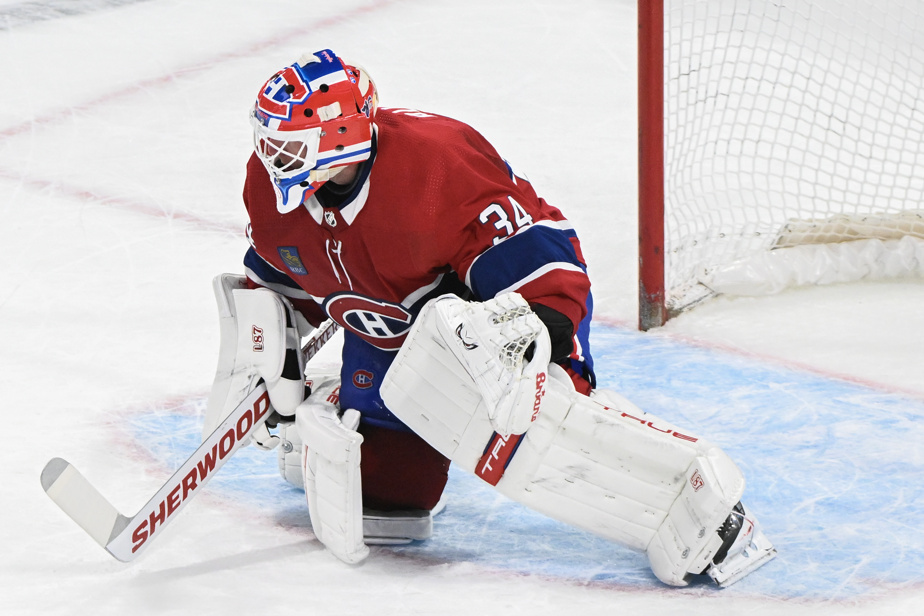stick problem
When I watch a hockey game, I’m always surprised to see that many players often drop their stick. Especially the goalkeepers. Having played hockey for a long time, my coaches kept telling us to hold our sticks well. Is it because of their lightness? And do you have any stats on whether broken sticks are up every year? The good old Sherwood is no longer appropriate, but still, the sticks seem so fragile to me!
Jean-Marceau
Response from Richard Labbe
Ah, the good old Sherwoods. Apparently Jason Spezza was the last player – we’re excluding goalies here – to play with wooden sticks, and there’s a reason for that: those sticks weighed around 85 lbs (ok, we’re exaggerating, but still) , and above all, they did not allow one-timers to be made with the precision of modern sticks. These sticks are very light and yes, they can be dropped more easily, but we will also notice that the modern defender has developed a thousand and one ways to make them slip away from a rival, sometimes legally, sometimes not. And yes, modern poles tend to break more easily, especially at the bottom, a defect that all manufacturers have been promising to correct for a few years now. Maybe one day ?
Where does the wave come from?

PHOTO BERNARD BRAULT, PRESS ARCHIVES
Supporters of the Canadian make the wave.
Where does the famous wave observed during sporting events come from?
Daniel Fournier
Response from Justin Vezina
The origins of the wave are debated. It’s a tricky question. The first time the wave – as we know it – was filmed was during a playoff game between the New York Yankees and the Athletics, in Oakland, on October 15, 1981. However, its origin dates back to the 19the century, according to baseball historian Peter Morris. In his work A Game of Inches, he recounts that his fellow historian Tom Shieber met with a Baseball Hall of Fame volunteer who discovered a snippet recounting a wave during a disputed meeting on October 15, 1866 in Brooklyn: “A rather amusing scene took place here. One individual, cramped for two or three hours on the temporary bench to the left of the field, got up, stretched his body, arms and neck to the maximum, and seemed to feel quite refreshed; his next neighbor imitated his example, and one after another almost all the spectators got up, straightened up, and then resumed their places. The effect was ridiculous in the extreme […] and from time to time the process repeated itself. »
The term “vague” was not used, but it fits this description. And in Montreal? It was August 9, 1984, during an Expos game at Olympic Stadium against the Chicago Cubs, according to our former colleague from The Press Michael Blanchard. According to him, the wave became popular in the fall of 1983 in the NFL before reaching Montreal. Then Expos manager Bill Virdon laughed after the Expos’ 1-0 win in 10e sleeve: “I don’t know if people made the wave to encourage us to count, or because they were bored to death. Internationally, the wave was popularized during the Mexico Soccer World Cup in 1986.
Who pays what?
When a team acquires a contract like Shea Weber’s to reach the salary floor, or if a team is involved in a three-club trade as was the case with Ryan O’Reilly, who ultimately pays the player’s salary ?
Stephane Lajeunesse
Response from Simon-Olivier Lorange
These are two very different cases. The Arizona Coyotes acquired Weber’s full contract a few weeks ago. It is therefore them – or more likely an insurance company – who will have to pay his salary. What interests the Coyotes is above all Weber’s real salary (1 million per year for another 3 years), a sum much lower than the sum listed on the club’s payroll, or 7.857 million. Now, Ryan O’Reilly: He was first traded by the St. Louis Blues to the Minnesota Wild, who quickly traded him to the Toronto Maple Leafs. The Blues kept half his salary, the maximum proportion expected by the NHL. The Wild kept half of the remaining sum – so a quarter of the total. The Leafs therefore pay the last quarter. All this will be erased on 1er next July when O’Reilly becomes an unrestricted free agent.
After a long detour

PHOTO DAVID BOILY, LA PRESSE ARCHIVES
Nick Suzuki scores against Craig Anderson of the Buffalo Sabers on a penalty shot.
When shootouts were introduced in hockey, the player tended to go straight for the goaltender. Now the puck carrier forks, almost goes to the boards before returning to the goal. Is this approach really more effective than going straight to the point?
John Dufresne
Response from Simon-Olivier Lorange
To our knowledge, there is no comprehensive study on this subject. We can therefore only provide you with our impressions. Several players, as you point out, are now taking a long detour – think in particular of Nick Suzuki, who has become a specialist. This detour allows the shooter to give himself time, and forces the goalkeeper to stretch his movement if the player decides to use his backhand. However, not everyone does it the same way. The best in this area this season in the NHL, like Suzuki, Jason Robertson or Artemi Panarin, adopt a very wide layout. Teuvo Teravainen also avoids the center of the ice, but moves away from it much less. As for Evgeny Kuznetsov, he too chooses the detour, but usually arrives at such low speed in front of the goalkeeper that all the distance traveled no longer has any real value. In short, there is no universal recipe, only modes, which players can adopt and adapt to their liking.
